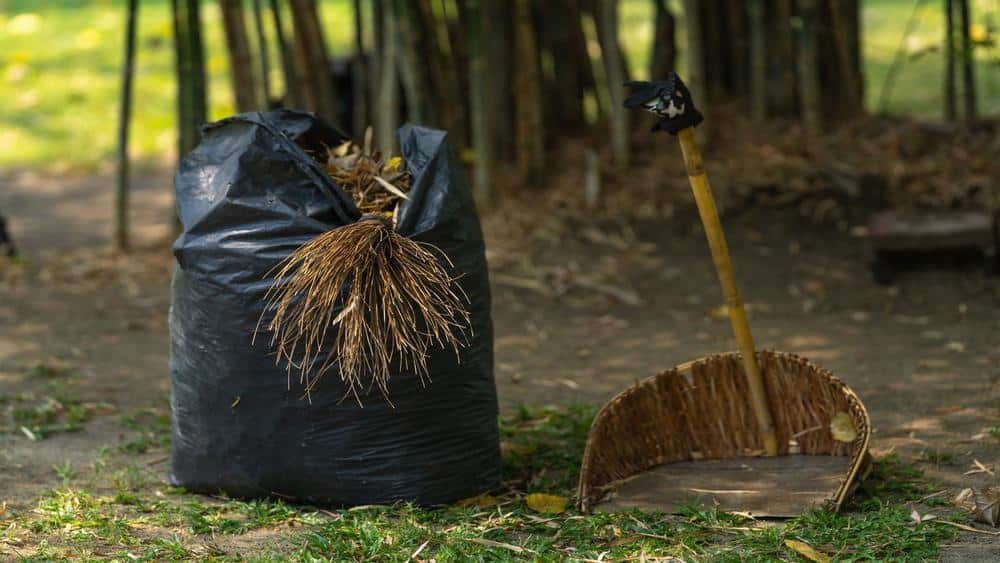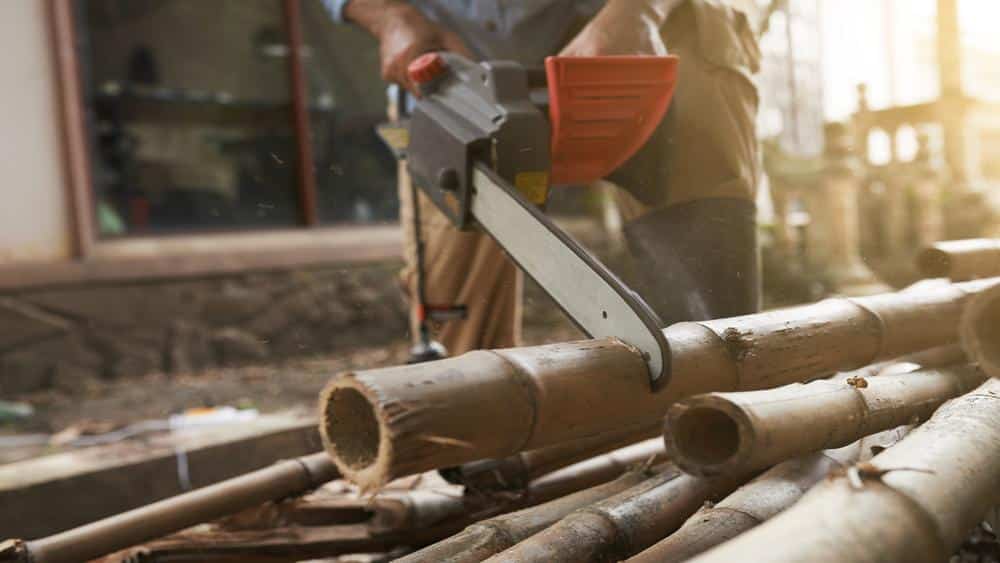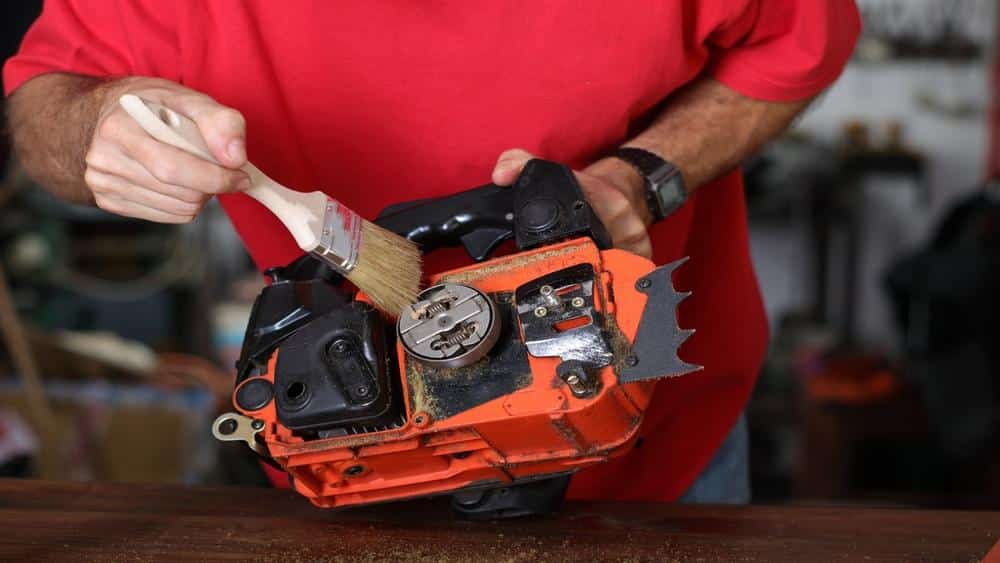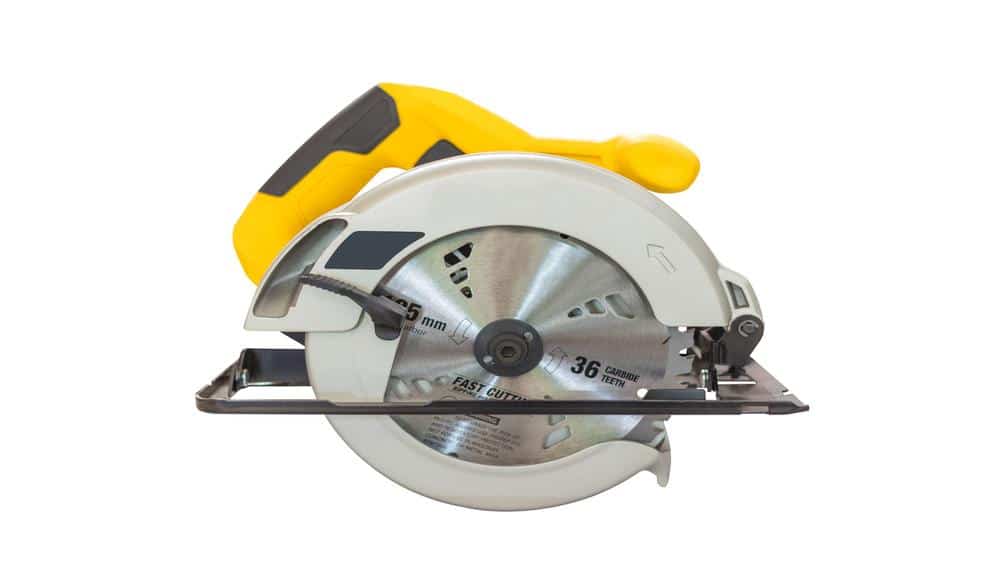Bamboo is a remarkable natural resource known for its strength and versatility. Its eco-friendly nature and renewable properties have gained popularity in various fields. However, using the right tool is essential for precise and efficient results when cutting bamboo. A chainsaw can be a valuable asset, allowing you to cut through bamboo easily. This article will explore the necessary steps how to cut bamboo with a chainsaw, ensuring safety and effectiveness.

1. Choosing the Right Chainsaw
Before diving into the cutting process, selecting the appropriate chainsaw for the task is crucial. Consider the following factors when choosing a chainsaw for cutting bamboo:
Chainsaw Size and Power
The size and power of the chainsaw should match the thickness and density of the bamboo you intend to cut. A lighter chainsaw with a lower engine power may suffice for smaller, thinner bamboo. However, a more robust and powerful chainsaw is recommended to cut more extensive and thicker bamboo efficiently.
Blade Length and Type
Opt for a chainsaw with a blade length suitable for the diameter of the bamboo you’ll be working with. A longer blade allows for smoother cuts and better control. Additionally, consider using a chainsaw with a specialized bamboo cutting blade or a blade designed for hardwood, as it can withstand the challenges bamboo presents.
Brand and Quality
Investing in a reputable chainsaw brand known for its quality and durability is essential. This ensures a reliable and long-lasting tool that can withstand the demands of cutting bamboo.

2. Preparing the Bamboo
Before starting the cutting process, preparing the bamboo is essential to ensure smooth and accurate cuts. Follow these steps:
Clear the Area
Ensure the work area is clear of any obstructions, debris, or objects that may interfere with the cutting process. Create a safe and spacious environment to maneuver the chainsaw effectively.
Trim Branches
If the bamboo has branches, remove them before cutting. Trimming the branches will make cutting easier and prevent the chainsaw from getting tangled or causing accidents.

3. Safety Precautions
Safety should always be the top priority when working with power tools like chainsaws. Take the following precautions to ensure a safe cutting experience:
Wear Protective Gear
Always wear appropriate protective gear, including safety glasses or goggles, gloves, hearing protection, and a hard hat. This will protect you from potential hazards, such as flying debris or noise-related injuries.
Use a Sharp Chainsaw Blade
Ensure your chainsaw’s blade is sharp before starting the cutting process. A dull blade can cause the chainsaw to kick back or lead to uneven cuts, increasing the risk of accidents. Sharpen the blade regularly or replace it if necessary.
Secure the Bamboo
Secure the bamboo firmly in place to prevent it from moving or slipping during cutting. Use clamps or ask a partner to hold it steady while you operate the chainsaw. This ensures stability and reduces the chances of mishaps.

4. Cutting Techniques
To achieve clean and precise cuts while cutting bamboo with a chainsaw, consider the following techniques:
Angle of Cut
Position the chainsaw at a slight angle while cutting the bamboo. This helps guide the chainsaw through the fibers, preventing it from getting stuck or causing rough cuts. Experiment with different angles to find the most effective approach for your specific bamboo.
Divide into Sections
If you’re working with long sections of bamboo, it’s often easier to cut them into more manageable pieces before proceeding. This allows for better control and maneuverability, resulting in smoother cuts.
Discover the artistry hidden within logs! Enhance your skills and creativity by reading our article on How to Cut Log Slices with Chainsaw: From Logs to Art. Unleash your inner artist today!
5. Tips for Successful Bamboo Cutting
To optimize your bamboo cutting experience with a chainsaw, consider the following tips:
- Secure the bamboo stalk with tape or clamps to prevent it from moving during the cutting process.
- Use a chainsaw with a sharp blade to ensure cleaner and more efficient cuts.
- Choose dry bamboo for cutting, as it is easier to work with.
- Regularly inspect the chainsaw for any signs of damage or wear, and perform maintenance as needed.
- Practice proper cutting techniques, maintaining a firm grip on the chainsaw and using controlled, steady motions.
- Take breaks when needed, as cutting bamboo can be physically demanding.
By implementing these tips, you can enhance your cutting experience and achieve optimal results.
Discover the key to flawless bamboo cutting with precision! Dive into our article “How to Cut Straight With a Chainsaw: Mastering Precision” and unlock the secrets to successful cuts. Don’t miss out!

6. Maintenance Tips
To keep your chainsaw in optimal condition and ensure its longevity, follow these maintenance tips:
Storing the Chainsaw Properly
After completing the bamboo cutting process, storing the chainsaw properly is essential. Clean the chainsaw thoroughly, removing any debris or sawdust. Follow the manufacturer’s instructions for proper storage, ensuring the chainsaw is placed safely and securely. This helps prolong its lifespan and ensures its availability for future use.
Regular Cleaning
After each cutting session, clean the chainsaw thoroughly. Remove any sawdust, debris, or resin buildup that may affect its performance. Regular cleaning prevents clogging and extends the life of your chainsaw.
Chain Tension and Lubrication
Check the tension of the chainsaw’s chain regularly and adjust it if necessary. Additionally, keep the chain well-lubricated to reduce friction and enhance cutting efficiency. Refer to the chainsaw’s manual for specific tension adjustment and lubrication instructions.

7. Alternative Power Tools for Thicker Bamboo
While a chainsaw is suitable for cutting most bamboo, thicker and denser varieties may require alternative power tools. Consider the following options:
Circular Saws
Circular saws equipped with a carbide-tipped blade can effectively cut thicker bamboo. These saws provide more power and stability, allowing you to make precise cuts through denser sections.
Reciprocating Saws
Reciprocating saws, also known as “sabre saws,” with a blade designed for cutting wood can also be used for thicker bamboo. They offer versatility and maneuverability, making navigating through dense bamboo sections easier.
Jigsaws
Jigsaws equipped with a fine-toothed blade are suitable for intricate or curved cuts on bamboo. They provide greater control and precision, allowing you to create intricate designs or shapes.
8. Seeking Professional Help or Tutorials
Suppose you are new to cutting bamboo with a chainsaw or are still determining the process. In that case, seeking professional help or consulting tutorials can be beneficial. Experts in the field can provide valuable guidance and demonstrate proper techniques to ensure your safety and success.
Discover the essential knowledge you need to cut bamboo with a chainsaw safely! For beginners in this task, our article Most Common Chainsaw Injuries: From Cuts to Caution. From Cuts to Caution provides crucial insights. Don’t miss out!
9. FAQ (Frequently Asked Questions)
Can I cut bamboo with a chainsaw?
Yes, using a chainsaw to cut bamboo is effective, provided you follow the proper techniques and safety precautions.
What should I wear when cutting bamboo with a chainsaw?
Wearing protective gear, including safety glasses or goggles, gloves, hearing protection, and a hard hat, is essential to ensure your safety while operating a chainsaw.
Do I need to sharpen the chainsaw blade before cutting bamboo?
Yes, using a sharp chainsaw blade is crucial when cutting bamboo. A dull blade can cause accidents and result in uneven cuts.
What are the alternative power tools for cutting thicker bamboo?
Circular saws, reciprocating saws, and jigsaws can be used for cutting thicker bamboo, depending on the specific requirements of your project.
Is it necessary to divide bamboo into sections before cutting?
Dividing long sections of bamboo into smaller, more manageable pieces can make cutting more accessible and provide better control over the cuts.
10. Conclusion
In conclusion of how to cut bamboo with a chainsaw, Cutting bamboo with a chainsaw can be an efficient way to work with this versatile material. You can achieve precise and clean cuts by choosing the right chainsaw, preparing the bamboo properly, following safety precautions, and utilizing the appropriate cutting techniques. Remember to maintain your chainsaw regularly and consider alternative power tools for thicker bamboo when necessary. With these guidelines in mind, you’ll be well-equipped to cut bamboo effectively for construction, crafts, or other purposes.